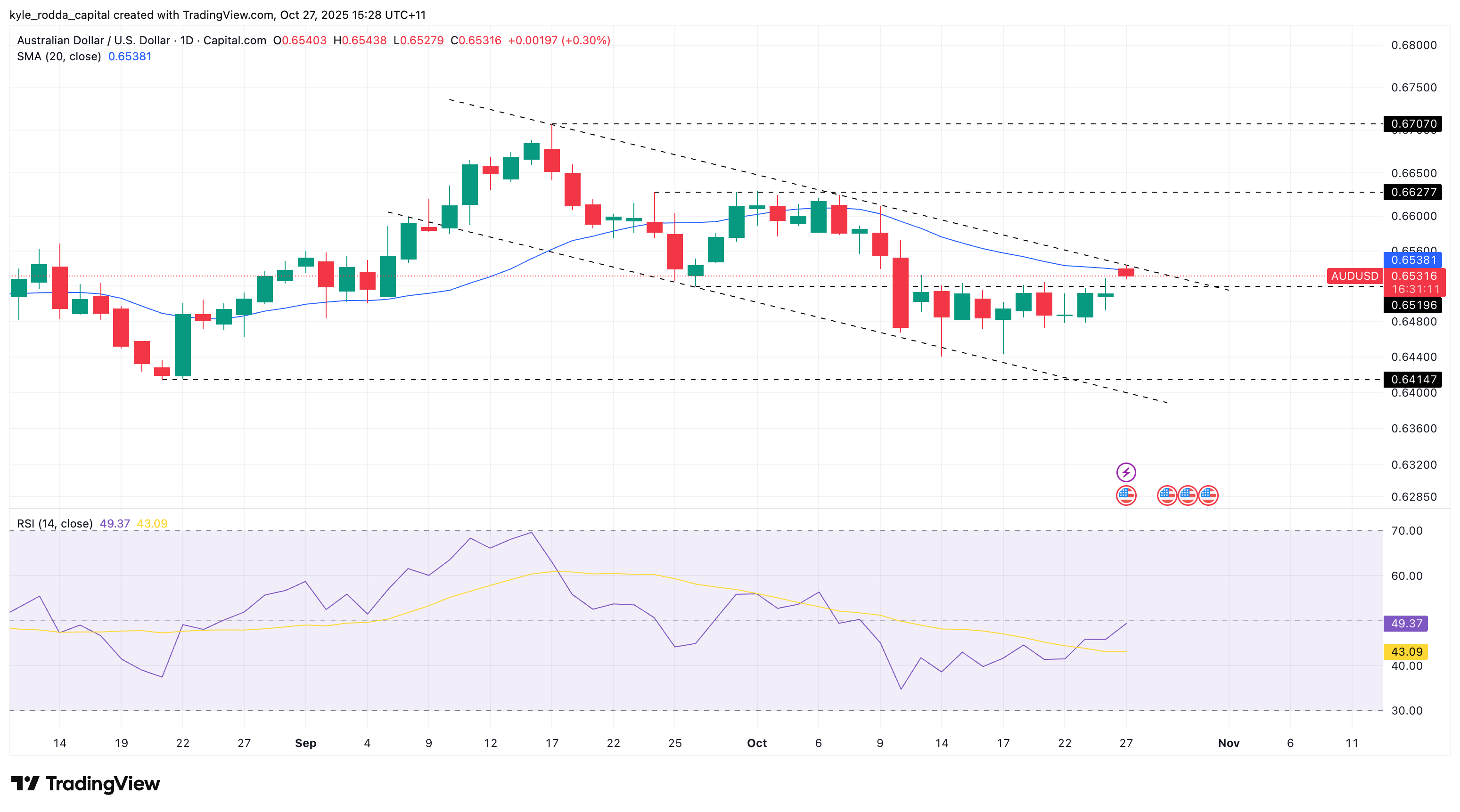Future RBA cuts hang in the balance ahead of Australian inflation data
Another RBA cut before the end of 2025 hinges on the official September CPI data.
The official quarterly Australian CPI report will be released on Wednesday, 29th of October, 2025 and may determine whether the RBA cuts the cash rate again before the end of the year.
Economists expect steady trimmed mean inflation
Economists are predicting a slight lift in headline CPI for the quarter. Consensus forecasts suggest price growth expanded 3.1% year-over-year in the September quarter, up from 3.0% year-over-year in the quarter prior. The lift is likely to come due to the rolling off of electricity subsidies in some Australian states during the period, with the dynamic responsible for a material uplift in the monthly CPI indicator in July and August.
While headline inflation is expected to rise above the RBA’s 2% to 3% target band, trimmed mean CPI is projected to be more contained. Underlying inflation is estimated to have remained at 2.7% year-over-year, above the mid-point of the RBA target band but still safely within it.
On a monthly basis, headline and trimmed mean inflation is expected to have risen by 1.1% and 0.8% respectively.
The markets look for tame inflation to support more RBA cuts
Recent Australian labour force data put back on the agenda imminent RBA rate cuts. The employment figures revealed a surprise increase in the Australian unemployment rate to 4.5%, the highest level since November 2021. It came as the economy added a paltry 15,000 jobs for the month, with a rise in the underutilisation rate, underemployment rate and participation rate pointing to building spare capacity in the labour market.
Prior to the jobs figures, expectations for another cut before the end of 2025 had been watered down by the surprisingly strong CPI indicator data. A strong official print could lead to the markets pushing back the timeline for potential cuts. The RBA estimated in its August Statement on Monetary Policy that trimmed mean CPI would finish the calendar year at 2.6%, with the dynamic modelled on the assumption of a 3.4% cash rate. Should the September CPI data come in higher than expected, it could challenge the RBA’s forecasts and with it market expectations for another cut before the end of the year.
Currently, the markets are fully baking in a cut by December and a roughly 70% chance of a cut in November.
AUD/USD looks poised for break-out ahead of CPI data
A resurgent US Dollar has weighed on the AUD/USD, challenging the pair’s 2025 uptrend. However, the prospect of further US rate cuts and, more importantly, improving US-China trade relations has the AUD/USD looking poised for a break higher.
While domestic factors have been tertiary to traders, an upside surprise in CPI could see the AUD/USD break-out of its downward sloping trend channel and through resistance at the pair’s 20-day moving average.
Conversely, a benign print could weigh on the AUD/USD with previous resistance at 0.6520 a possible support level.
 (Source: Trading View)
(Source: Trading View)
(Past performance is not a reliable indicator of future results)